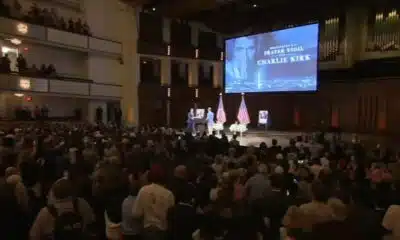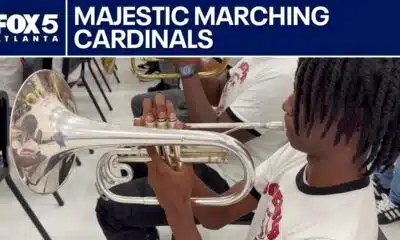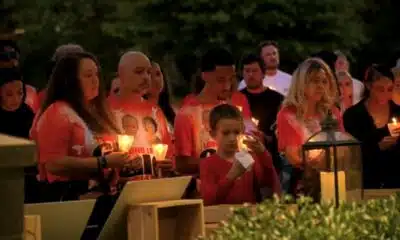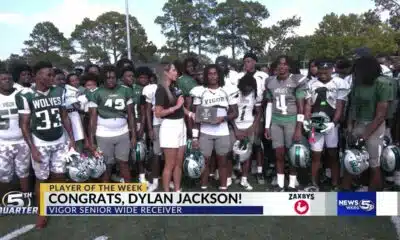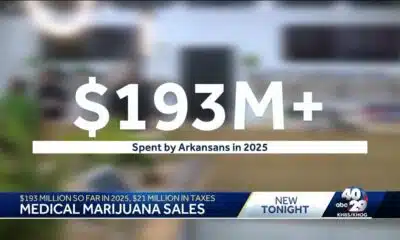News from the South - Virginia News Feed
Bringing the doctor to your doorstep: Rural Virginia clinics expand telehealth access
Bringing the doctor to your doorstep: Rural Virginia clinics expand telehealth access
by Charlotte Rene Woods, Virginia Mercury
February 28, 2025
Southwest Virginia-based health clinics are partnering with a telehealth company and UVA Health to bolster rural healthcare.
The Health Wagon in Wise and UVA Health in Charlottesville announced they’re teaming up this week to distribute TytoCare devices — a telehealth tool people can use at home — to uninsured families.
The devices use the internet to connect with healthcare providers for real-time remote evaluations and exams ranging from heart and lung checks to ear and throat exams or temperature readings. This also can eliminate the need to visit a hospital or clinic, which can be a barrier for many rural Virginians that may need to travel further for access to care.
“This program is groundbreaking for families in our region,” said Teresa Tyson, Health Wagon’s CEO. “It not only brings high-quality diagnostic tools into homes but also ensures that patients receive timely care without the need to travel long distances, which is often a challenge in rural communities.”
Health Wagon clinics provide free medical, dental, pharmacy and vision to underserved communities in several Southwest Virginia localities. Clinics like Health Wagon along with free clinics or Federally Qualified Health Centers around the state have been critical to provide care for under or uninsured Virginians. About 6.5% of Virginians are uninsured, according to Kaiser Family Foundation data.
Jazlyn Rowe, the nurse practitioner overseeing the project, said that patients can call 276-328-8850 and “ask to speak to Heather to request a device.” People can also ask for the devices when they visit the clinic.
The devices are available to under or uninsured Health Wagon patients, Rowe said, “as there is a great need in this area for remote monitoring.”
YOU MAKE OUR WORK POSSIBLE.
Virginia Mercury is part of States Newsroom, a nonprofit news network supported by grants and a coalition of donors as a 501c(3) public charity. Virginia Mercury maintains editorial independence. Contact Editor Samantha Willis for questions: info@virginiamercury.com.
The post Bringing the doctor to your doorstep: Rural Virginia clinics expand telehealth access appeared first on virginiamercury.com
News from the South - Virginia News Feed
Some employers take action against employees for social media comments on Charlie Kirk's death
SUMMARY: Following Charlie Kirk’s death, some Virginia employers have taken action against employees who made controversial social media comments. In healthcare and education sectors, individuals were placed on leave or terminated for remarks deemed unprofessional or supportive of violence. Riverside Walter Reed Hospital fired an anesthesiologist, and Newport News and Accomack County schools disciplined staff members. Experts highlight the blurred line between personal expression and professional conduct due to social media’s reach. William and Mary law professor Margaret Hugh emphasized that employment laws and at-will policies allow employers broad authority to act. She urges unity and respect amid heightened tensions.
Some Virginia employers are taking action against employees for social media comments made regarding Charlie Kirk’s death. A legal expert weighed in on where the line is drawn.
Subscribe: https://www.youtube.com/user/wvectv/?sub_confirmation=1
Download the 13News Now app: https://bit.ly/13NewsNowApp
Watch 13News Now+ for free on streaming: https://www.13newsnow.com/13NewsNowPlus
Check out our website: https://www.13newsnow.com/
Like us on Facebook: https://www.facebook.com/13newsnow/
Follow us on X/Twitter: https://x.com/13newsnow
Follow us on Instagram: https://www.instagram.com/13newsnow/
News from the South - Virginia News Feed
Area of interest forms in the Atlantic
SUMMARY: On September 11, 2025, Chief Meteorologist Tim Pandages reported on Hurricane Hub Live about tropical developments in the Atlantic and eastern Pacific. In the Atlantic, a low-chance area of interest near the Cabo Verde Islands may become Tropical Storm Gabrielle but requires favorable conditions. Recent tropical waves have struggled due to stable atmospheric conditions. Models show possible development east of the Leeward Islands with a likely recurving path away from Bermuda. In the eastern Pacific, Tropical Depression 13E has formed, expected to become Hurricane Mario, the season’s 8th hurricane. The Atlantic has had only one hurricane so far, Major Hurricane Aaron. Activity is expected to increase into October.
The newly formed area of interest could become Invest 92-L off the coast of Africa. Find out about that and more during tonight’s episode of Hurricane Hub LIVE! Livestream from Thursday, September 11, 2025.
Subscribe: https://www.youtube.com/user/wvectv/?sub_confirmation=1
Download the 13News Now app: https://bit.ly/13NewsNowApp
Watch 13News Now+ for free on streaming: https://www.13newsnow.com/13NewsNowPlus
Check out our website: https://www.13newsnow.com/
Like us on Facebook: https://www.facebook.com/13newsnow/
Follow us on X/Twitter: https://x.com/13newsnow
Follow us on Instagram: https://www.instagram.com/13newsnow/
News from the South - Virginia News Feed
Cat cafes, chromotherapy and pumpkin delivery: Here’s what’s new in RVA this September
SUMMARY: This September in RVA, Patch to Porch RVA delivers handpicked pumpkins from local farms, offering design, setup, and cleanup services for homes and events in Richmond, Henrico, and Chesterfield. Shore Pump introduces Beam Light Sauna, featuring infrared sauna and chromotherapy, promoting detox, skin renewal, and wellness with customizable sessions and memberships. The Fan now hosts River City’s first cat café, The Perfect Bean, combining a coffee bar with an adoptable cat lounge upstairs. Sourced locally, their drinks include seasonal, cat-themed specials. Cats come from Purring Hearts VA rescue, offering adoption opportunities, fostering community engagement and animal welfare.
What’s New in RVA is dedicated to informing you about the latest happenings in the Richmond area.
-
News from the South - Kentucky News Feed7 days ago
Lexington man accused of carjacking, firing gun during police chase faces federal firearm charge
-
News from the South - Alabama News Feed7 days ago
Zaxby's Player of the Week: Dylan Jackson, Vigor WR
-
News from the South - Arkansas News Feed7 days ago
Arkansas medical marijuana sales on pace for record year
-
News from the South - North Carolina News Feed5 days ago
What we know about Charlie Kirk shooting suspect, how he was caught
-
News from the South - Missouri News Feed7 days ago
Local, statewide officials react to Charlie Kirk death after shooting in Utah
-
Local News7 days ago
US stocks inch to more records as inflation slows and Oracle soars
-
Local News6 days ago
Russian drone incursion in Poland prompts NATO leaders to take stock of bigger threats
-
Local News Video6 days ago
Introducing our WXXV Student Athlete of the Week, St. Patrick’s Parker Talley!





